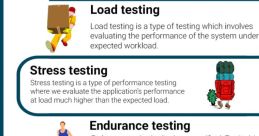| Title |
Testing for |
| Board | Testing For Soundboard |
| Format | MP3 |
| Length | 1 second |
| Plays | 0 plays |
| Auto Transcribed | No |
| Download | |
| More | |
| Aural Matches | |
| Share |
This MP3 audio sound quote is from:
Testing for a specific sound can sometimes be a challenging process, but it is essential for a variety of industries and applications. The first sound that comes to mind when thinking about testing is the sharp, high-pitched tone of a tuning fork. This classic tool is commonly used in the medical field to check for hearing loss or to calibrate instruments. When struck against a surface, the tuning fork emits a clear, consistent sound that can be easily measured and analyzed.
Another important sound related to testing is the click of a button on a computer keyboard. As technology continues to advance, the need for accurate and reliable testing of software and hardware components becomes increasingly important. The clicking sound of a keyboard signifies input and action, whether it be running diagnostic tests, checking for errors, or generating a report. The rapid succession of clicks as a software program runs through its testing protocol can be both mesmerizing and nerve-wracking.
In the field of mechanical engineering, the sound of metal grinding against metal is a frequent occurrence during testing and troubleshooting. This harsh, scraping noise often indicates a problem with a machine or a component that needs adjustment or replacement. The sound of metal-on-metal testing can be both frustrating and rewarding, as it can lead to the discovery of a flaw that, once corrected, results in improved performance and reliability.
When testing for sound quality in a recording studio or performance venue, the subtle hum of background noise can be a significant factor in determining the overall clarity and fidelity of a sound system. The low, constant buzz of electrical interference or ambient noise can detract from the purity of a musical performance or spoken word recording. By carefully monitoring and adjusting for these background sounds, audio engineers can ensure that the final product is free from unwanted distractions and distortion.
In the realm of material science and chemistry, the crackling sound of a chemical reaction taking place can be both mesmerizing and informative. By closely listening to the pops, hisses, and sizzles that accompany a chemical test, researchers can gain valuable insight into the nature of the substances being tested. The unpredictable nature of these sounds can add an element of excitement and discovery to the process of experimentation and analysis.
In the world of food testing, the satisfying crunch of a freshly picked apple or the crackling sound of bacon frying in a skillet can reveal important information about the quality and freshness of a food product. By paying attention to the sounds that accompany the preparation and consumption of food, chefs and food scientists can make informed decisions about taste, texture, and overall appeal. The sound of food being tested can evoke memories and emotions, as well as provide valuable feedback on the sensory experience.
In the realm of medical testing, the gentle whooshing sound of a blood pressure cuff inflating and deflating can provide vital information about a patient's cardiovascular health. This rhythmic sound, accompanied by the slow release of air from the cuff, indicates changes in blood pressure and can help healthcare providers diagnose and monitor conditions such as hypertension or hypotension. By listening carefully to the sound of the cuff testing, medical professionals can make informed decisions about treatment and management of a patient's health.
Whether testing for mechanical performance, sound quality, chemical reactions, or medical conditions, the sounds associated with the testing process play a crucial role in providing valuable feedback and information. By paying attention to the subtle nuances and variations in sound, researchers, engineers, and healthcare providers can make informed decisions and improve the quality and reliability of their work. These sounds can be both practical and artistic, conveying important data while also stimulating the senses and inspiring creativity. You can play and download these sounds here.
